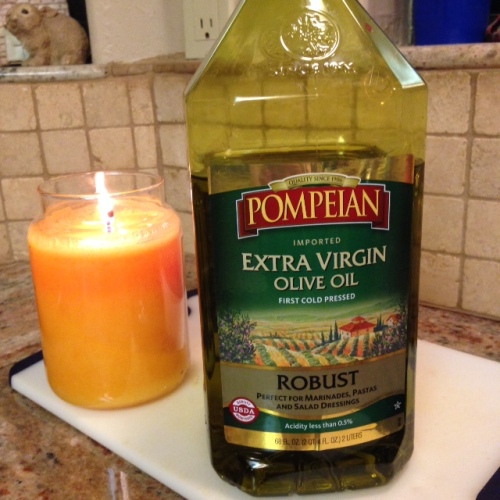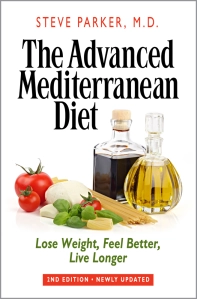
Italian seaside tangentially related to this post
Investigators affiliated with universities in Italy and Greece wondered about the effect on obesity of two ketogenic “Mediterranean” diet spells interspersed with a traditional Mediterranean diet over the course of one year. They found significant weight loss, and perhaps more importantly, no regain of lost weight over the year, on average.
This scientific study is right up my alley. I was excited when I found it. Less excited after I read it.
The Set-Up
This was a retrospective review of medical records of patients of a private nutritional service in three fitness and weight control centers in Italy between 2006 and 2010. It’s unclear whether patients were paying for fitness/weight loss services. 327 patient records were examined. Of these, 89 obese participants met the inclusion and exclusion criteria and started the program; 68 completed it and were the ones analyzed. (That’s not at all a bad drop-out rate for a year-long study.) The completers were 59 males and 12 females (I know, the numbers don’t add up, but that’s what they reported). Ages were between 25 and 65. Average weight was 101 kg (222 lb), average BMI 35.8, average age 49. All were Caucasian. No diabetics.
Here’s the program:
- 20 days of a very-low-carb ketogenic diet, then
- 20 days of a low-carbohydrate non-ketogenic diet for stabilization, then
- 4 months of a normal caloric Mediterranean diet, then
- repeat #1 and #2, then
- 6 months of a normal caloric Mediterranean diet
In the ketogenic phases, which the authors referred to as KEMEPHY, participants followed a commercially available protocol called TISANOREICA. KEMEPHY is combination of four herbal extracts that is ill-defined (at least in this article), with the idea of ameliorating weakness and tiredness during ketosis. The investigators called this a ketogenic Mediterranean diet, although I saw little “Mediterranean” about it. They ate “beef & veal, poultry, fish, raw and cooked green vegetables without restriction, cold cuts (dried beef, carpaccio and cured ham), eggs and seasoned cheese (e.g., parmesan).” Coffee and tea were allowed. Items to avoid included alcohol, bread, pasta, rice, milk, and yogurt. “In addition to facilitate the adhesion to the nutritional regime, each subject was given a variety of specialty meals constituted principally of protein and fibers. “These meals (TISANOREICA) that are composed of a protein blend obtained from soya, peas, oats (equivalent to 18 g/portion) and virtually zero carbohydrate (but that mimic their taste) were included in the standard ration.” They took a multivitamin every morning. Prescribed carbohydrate was about 30 grams a day, with macronutrient distribution of 12% carb, 36 or 41% protein, and 51 0r 52% fat. It appears that prescribed daily calories averaged 976 (but how can that be prescribed when some food items are “unrestricted”?).
I found little explanation of period #2 mentioned above, the low-carb non-ketogenic diet. Prescribed macronutrients were 25 or 33% carb, 27 0r 31% protein, 41 or 44% fat, and about 91 g carbohydrate. Prescribed daily calories appear to have averaged 1111.
After the first and second active weight loss ketogenic phases, participants ate what sounds like a traditional Mediterranean diet. Average prescribed macronutrient distribution was 57% carbohydrate, 15 % protein, and 27% fat. Wine was allowed. It looks like 1800 calories a day were recommended.
Food consumption was measured via analysis of 3-day diaries, but you have to guess how often that was done because the authors don’t say. The results of the diary analyses are not reported.
What Did They Find?
Most of the weight loss occurred during the two ketogenic phases. Average weight loss in the first ketogenic period was 7.4 kg (16 lb), and another 5.2 kg (11 lb) in the second ketogenic period. Overall average weight loss for the entire year was 16.1 kg (35 lb).
Average systolic blood pressure over the year dropped a statistically significant 8 units over the year, from 125 to 116 mmHg.
Over the 12 months, they found stable and statistically significant drops in total cholesterol, LDL cholesterol (“bad cholesterol”), triglycerides, and blood sugar levels. No change in HDL cholesterol (“good cholesterol”).
Liver and kidney function tests didn’t change.
The authors didn’t give explanations for the drop-outs.
Although the group on average didn’t regain lost weight, eight participants regained most of it. The investigators write that “…the post dietary analysis showed that they were not compliant with nutritional guidelines given for the Mediterranean diet period. These subjects returned tho their previous nutrition habits (“junk” food, high glycaemic index, etc.) with a mean “real” daily intake of 2470 Kcal rather than the prescribed 1800 Kcal.”
Comments
A key take-home point for me is that the traditional Mediterranean diet prevented the weight regain that we see with many, if not most, successful diets.
However, most formulas for calculating steady state caloric requirements would suggest these guys would burn more than the 1800 daily calories recommended to them during the “normal calorie” months. How hard did the dieters work to keep calories around 1800? We can only speculate.
Although the researchers describe the long periods of traditional Mediterranean diet as “normal caloric,” they don’t say how that calorie level was determined and achieved in the real world. Trust me, you can get fat eating the Mediterranean diet if you eat too much.
I’ll be the first to admit a variety of weight loss diets work, at least short-term. The problem is that people go back to their old ways of eating regain much of the lost weight, typically starting six months after starting the program. It was smart for the investigators to place that second ketogenic phase just before the typical regain would have started!
There are so few women in this study that it would be impossible to generalize results to women. Why so few? Furthermore, weight loss and other results weren’t broken down for each sex.
I suspect the results of this study will be used for marketing KEMEPHY and TISANOREICA. For all I know, that’s why the study was done. We’re trusting the investigators to have done a fair job choosing which patient charts to analyze retrospectively. They could have cherry-picked only the good ones. Some of the funding was from universities, some was from Gianluca Mech SpA (what’s that?).
How much of the success of this protocol is due to the herbal extracts and TISANOREICA, I have no idea.
The authors made no mention of the fact the average fasting glucose at baseline was 103 mg/dl (5.7 mmol/l). That’s elevated into the prediabetic range. So probably half of these folks had prediabetes. After the one-year program, average fasting glucose was normal at 95 mg/dl (5.3 mmol/l).
The improved lipids, blood sugars, and lower blood pressure may have simply reflected successful weight loss and therefore could have been achieved by a variety of diets.
The authors attribute their success to the weight-losing metabolic effects of the ketogenic diet (particularly the relatively high protein content), combined with the traditional Mediterranean diet preventing weight regain.
The authors write:
The Mediterranean diet is associated with a longer life span, lower rates of coronary heart disease, hypercholesterolemia, hypertension, diabetes and obesity. But it is difficult to isolate the “healthy” constituents of the Mediterranean diet, since it is not a single entity and varies between regions and countries. All things considered there is no “one size fits all” dietary recommendation and for this reason we have tried to merge the benefits of these two approaches: the long term “all-life” Mediterranean diet coupled with brief periods of a metabolism enhancing ketogenic diet.
I’ve attempted a similar merger with my Low-Carb Mediterranean Diet. Click here for an outline. Another stab at it was the Spanish Ketogenic Mediterranean Diet. And here’s my version of a Ketogenic Mediterranean Diet.
Steve Parker, M.D.
Reference: Paoli, Antonio, et al. Long Term Successful Weight Loss with a Combination Biphasic Ketogenic Mediterranean Diet and Mediterranean Diet Maintenance Protocol. Nutrients, 5 (2013): 5205-5217. doi: 10.3390/nu5125205









